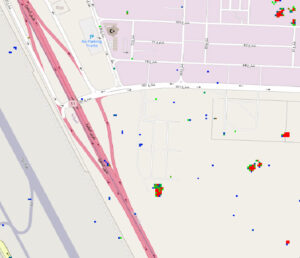Accurate Reporting
The above image was included in our report with an image credit: “Image source: unknown ship from Marine Executive”.
Our reprint permissions specifically state that news organizations must include the credit for any images they reprint. Unfortunately, one media organization did not, and misidentified the picture.
We did not use this image in our research. Ships dumping sewage is a common practice. We used it in our report to provide a context for what we were able to view from space. We never claimed it was a picture of a Chinese ship in the Spratlys. We have communicated with the agency, who reached out to us, and have urged them to print a retraction, and include our original image credit, and list of sources.
You can download our full report here, which includes the original image credit and a Methods and Sources page for our research.
In this recent interview on ANC’s Rundown with Mike Navallo, regarding our report, this image clarification is made at the 9:02 mark, in case there are any doubts from anyone regardiing the image source.
2.Nutrient pollution disrupts key ecosystem functions on coral reefs –The Royal Society Proceedings
3.Global assessment of the status of coral reef herbivorous fishes: evidence for fishing effects
4.Too much algae — and too many microbes — threaten coral reefs – National Science Foundation
5.Dissolved organic matter feedbacks in coral reef resilience – National Science Foundation
7.The wicked problem of China’s disappearing coral reefs, Hughes TP, Huang H, Young MA.
8.A Blueprint for Fisheries Management and Environmental Cooperation in the South China Sea, CSIS
9.Hysteresis in coral reefs under macroalgal toxicity and overfishing
11.The rising environmental toll of China’s offshore island grab, Yale School of the Environment
Subscribe Today
To receive alerts when we have new reports available, please click the button below. The service is free. You can unsubscribe at any time.




